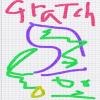I looked into flowering quince at one point and a paper had flowering quince inhibiting DAT with an EC50 of around 25.2 µg/ml, while agonizing beta-2-adrenergic receptors with an EC50 of around 4.8 µg/ml. This means it's much more potent as a b2 agonist, adrenergic. Think albuterol. https://www.ncbi.nlm...les/PMC3917013/
to a certain extent, I think that strong dat inhibitors in the wild (to the point they would be reminiscent of methylphenidate) will have a degree of influence upon the local cultures where they grew wild, as coca and khat did, and to a certain extent catuaba (as difficult as it seems to be to get that to work outside of Brazil for various reasons). Not that everything is necessarily known! I mean dat inhibition is common, it's just usually not extremely strong and comes along with other activities in a whole herb. theoretically the actives could be extracted.
A Tehran university team found very interesting results with saffron as compared to methylphenidate for ADHD treatment, and the aqueous extract increases dopamine although i haven't seen anything pinning down the actives. https://www.psychcon...-adhd-treatment
https://www.ncbi.nlm...pubmed/30741567
https://www.research...rations_in_Rats
saffron of course is notably pricey for most people not close to the source













































